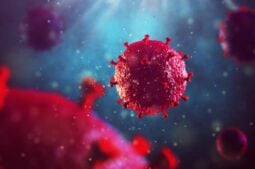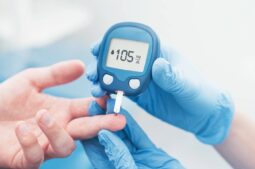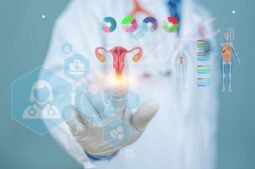
Period cramps vs early pregnancy cramps: what’s the difference? Abdominal discomfort is quite common in virtually all women. This may be a premenstrual symptom or something typical of the early months of pregnancy. But how can one distinguish the origin of menstrual cramps?
In this article, we address this issue, helping you better understand the differences and similarities between menstrual cramps and early pregnancy cramps.
What do period cramps feel like?
Menstrual cramps and early pregnancy cramps can feel very similar in the beginning. The biggest difference is the lack of blood that comes from the menstrual period. Or in other words, the pain of period cramps is a consequence of menstruation.
To understand the differences between period cramps vs early pregnancy cramps, we need to know what causes them. Dysmenorrhea is painful menstruation caused by uterine contractions when the uterine lining sheds during menstruation. These contractions manifest as abdominal pain and may be accompanied by other symptoms such as lower back pain, nausea, or breast tenderness.
What do early pregnancy cramps feel like?
Those who have experienced early pregnancy cramps often describe them as mild abdominal pain, less intense than menstrual symptoms.
It is not a sharp or stabbing pain but rather a pressure localized in the lower abdomen. It is not constant but occurs sporadically. It can last from a few minutes to a couple of days. It mostly happens during early pregnancy, between weeks 4 and 12.
However, each woman is unique and experiences symptoms differently or with varying intensity. Additionally, these cramps are often accompanied by the previously mentioned symptoms, such as fatigue and breast tenderness.
Early pregnancy cramps result from the changes that the uterus and a woman’s body undergo due to embryo implantation. In this process, the uterus expands and adjusts to accommodate the embryo, resulting in abdominal pains similar to those experienced during menstruation. These pains are part of the characteristic symptoms of this period, such as fatigue, increased urinary frequency, or breast sensitivity.
Period cramps or pregnancy? Key differences
As just mentioned, both menstrual cramps and early pregnancy cramps come with very similar symptoms. So, how do you know what kind of cramps you’re experiencing? There are some indicators that can help:
Bleeding
Menstrual cramps usually accompany or occur a few days before menstrual bleeding. However, in the case of early pregnancy cramps, if there is bleeding, it is lighter and has a paler color.
Pain intensity
Menstrual cramps may be more intense than pregnancy cramps.
The intensity of period pain is usually moderate to strong, while pregnancy cramps tend to be mild or moderate. They feel more like a sensation of tightness, pressure, or gentle cramping.
In any case, if the pain is persistent or debilitating in your daily life, consult with a specialist.
Timing
Menstrual cramps occur during menstruation, either before bleeding starts or throughout the entire period.
Pregnancy cramps can appear at any time during pregnancy:
- Implantation: Usually mild cramps associated with the embryo implanting in the uterus.
- First trimester: Caused by the growth of the uterus.
- Second and third trimesters: Sharp pains or cramps that occur with certain movements.
- End of pregnancy: Can indicate contractions.
Location of the cramp
Menstrual cramps are usually felt in the lower uterus area and can radiate to the lower back and thighs. In pregnancy, the pain is more localized and may also be noticed on the sides of the uterus.
Breast sensitivity
While this symptom is common to both menstrual cramps and early pregnancy cramps, in the latter case, it may appear with greater intensity.
Associated symptoms
If the cramps are menstrual, the associated symptoms will be typical of menstruation: bleeding, bloating, mood swings, among others. Pregnancy cramps may be accompanied by light spotting, hormonal changes related to pregnancy, and common symptoms such as fatigue, nausea, etc.
| Period Cramps | Early Pregnancy Cramps | |
|---|---|---|
| Timing | Start of the period | 6–12 days after ovulation or during early pregnancy |
| Duration | Can last several days | A few hours or 1–2 days |
| Location | Lower abdomen, often centralized | Lower abdomen, sometimes more on the sides |
When to take a pregnancy test
Cramps or pain can be signs of early pregnancy, although this is not always the case. This raises the question: when to take a pregnancy test?
It is advisable to wait until your period is at least one day late. Remember that taking a pregnancy test too early can give inaccurate results. For more reliable results, it is best to wait until you have a week of missed period.
If you are undergoing fertility treatment, your specialist will tell you when to take a blood pregnancy test.
When to consult a fertility specialist
If you experience cramps and your pregnancy test is positive—assuming it was taken correctly—consult a specialist. Likewise, if you feel pain or cramps but the test is negative, you should also see a healthcare professional, especially if these symptoms are accompanied by heavy bleeding.
Another frequent question is: Do you still get period cramps when pregnant? Yes, it is possible that some women may continue to experience mild menstrual cramps during the early weeks of pregnancy. This could be due to the uterus adapting to its new situation, experiencing contractions similar to those that occur during menstruation. However, it is important to note that these discomforts should be mild and not accompanied by heavy bleeding. Should this occur, consult with your medical team immediately.
Dealing with cramps
Whether caused by menstruation or pregnancy, there are various ways to relieve these cramps or pains.
Period cramps
Given the previously explained symptoms, menstrual cramps cause discomfort for the woman experiencing them. However, there are some tips that can help alleviate their discomfort.
- Pain relievers, as long as your healthcare professional deems it necessary and following their recommendations.
- Heat: Applying a heating pad or a device that emits heat can help alleviate discomfort in the abdominal or lumbar area.
- Engage in moderate exercise, such as walking or yoga, as exercise increases blood flow and releases endorphins.
- Maintain a healthy diet by avoiding caffeine, processed foods, sugar, and salt, which can help reduce fluid retention and bloating.
- Consider nutritional supplements like calcium, magnesium, or vitamin B6 to help regulate hormone levels. Remember to consult with your medical team before making any changes to your daily routine
Early pregnancy cramps
On the other hand, when it comes to early pregnancy cramps, it is important to pay attention to what your body is experiencing at that time. While they are less intense than menstrual cramps, it is important to stay vigilant and follow some recommendations.
- Ensure you maintain an optimal level of rest and sleep.
- Stay hydrated, as dehydration can worsen the symptoms.
- Reduce your stress levels through relaxation techniques.
If you experience any symptoms of early pregnancy cramps that concern you, do not hesitate to consult with your doctor as soon as possible.
As seen throughout the entire article, both menstrual cramps and early pregnancy cramps present with similar symptoms. Therefore, it is essential to be attentive to what your body is experiencing, how long it lasts, and how intense it is. And, of course, be aware of the accompanying symptoms for either of these two types of cramps.





Comments are closed here.